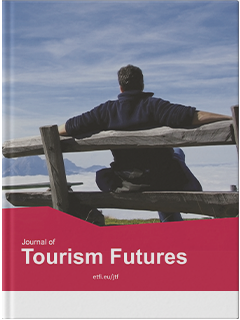嘉宾评论:新西兰旅游业的再想象
IF 5.8
Q1 HOSPITALITY, LEISURE, SPORT & TOURISM
引用次数: 0
摘要
事实上,每个国家的游客都受到了影响,并在未来两年的大部分时间里继续受到影响,因为航空运输联系、边境限制和入境障碍、自我隔离要求和减少新冠肺炎传播的措施大幅减少,尤其是酒店业,以及公共和私营旅游部门的运营方式(UNWTO,2020)。全球旅游界认识到新冠肺炎造成的危机的潜在积极影响,并呼吁重新想象旅游业,采取更可持续和更全面的有益方法,新西兰:20多年来,该国一直以“100%纯新西兰”(McClure,2004)为口号进行营销,其自然景观是每年吸引近400万国际游客的主要景点。利用未来研究的预测范式和趋势分析方法,作者根据多种来源预测了新冠肺炎开始时的一系列旅游趋势。Fountain(2021)论文的核心是经济与食物身份之间的关系,并代表这两个概念;因此,提出了以下问题:“食品和饮料在国家更具弹性的旅游业未来将扮演什么角色?”Fountain观察到,新冠肺炎加速了许多趋势,这些趋势可能会影响旅游业重新走上更具弹性和再生的道路。本文章由计算机程序翻译,如有差异,请以英文原文为准。
Guest editorial: The re-imagination of New Zealand tourism
Virtually, every country's tourist arrivals were affected and continued to be for most of the next two years with significantly reduced air transport links, border restrictions and entry barriers, self-isolation requirements and measures to reduce the spread of COVID-19 that impacted, especially hospitality businesses and also the way in which both the public and private tourism sectors were able to operate (UNWTO, 2020). The global tourism community recognised the potential positive implications of the crisis caused by COVID-19, and calls for a re-imagination of tourism towards a more sustainable and holistically beneficial approach were heard everywhere, including, of course, in New Zealand: a country known for marketing itself for over 20 years with the slogan “100% Pure New Zealand” (McClure, 2004) and its natural scenery as the main attraction for nearly four million international visitors per year. Using a prognosis–prediction paradigm from futures studies and a trend analysis approach, the authors forecast a series of tourist trends at the beginning of COVID-19 based upon a multitude of sources. At the heart of Fountain's (2021) paper is the relationship between economy and identity with food and representing both concepts;thus, the following question is propositioned “what role will – or could – food and drink play in a more resilient tourism future for the country?” Fountain observes that COVID-19 has accelerated a number of trends, which are likely to influence the resetting of tourism on a more resilient and regenerative pathway.
求助全文
通过发布文献求助,成功后即可免费获取论文全文。
去求助
来源期刊

Journal of Tourism Futures
HOSPITALITY, LEISURE, SPORT & TOURISM-
CiteScore
15.70
自引率
6.00%
发文量
64
审稿时长
34 weeks
期刊介绍:
 求助内容:
求助内容: 应助结果提醒方式:
应助结果提醒方式:


